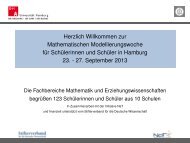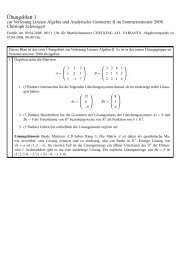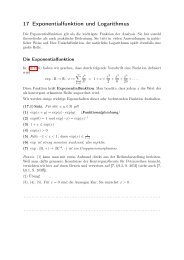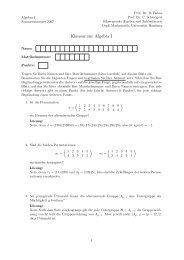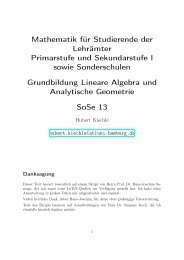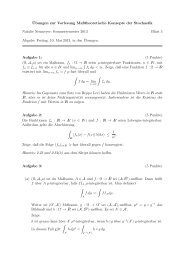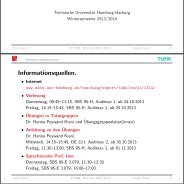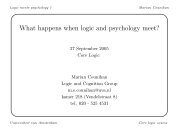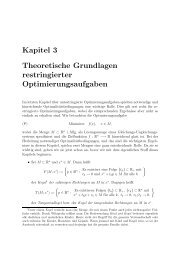pdf file
pdf file
pdf file
Create successful ePaper yourself
Turn your PDF publications into a flip-book with our unique Google optimized e-Paper software.
Proposition 3.2.16.<br />
Let K be a field and A be an associative unital K-algebra. Then the following properties are<br />
equivalent:<br />
1. A is projective as an A e -module.<br />
2. The short exact sequence of A e -modules<br />
0 → ker μ → A e μ → A → 0<br />
splits. Put differently, the multiplication epimorphism<br />
μ : A ⊗ K A → A<br />
has a right inverse as a morphism of bimodules:<br />
ϕ : A → A ⊗ K A<br />
with μ ◦ ϕ = id A and ϕ(abc) = a ∙ ϕ(b) ∙ c for all a, b, c ∈ A.<br />
3. Given any extension of fields K ⊂ E, the induced E-algebra A ⊗ K E is semisimple.<br />
For the proof of this statement, we refer to Chapter 10 of R.S. Pierce, Associative Algebras,<br />
Springer Graduate Texts in Mathematics 88.<br />
Definition 3.2.17<br />
A K-algebra A that has one of the properties of proposition 3.2.16 is called separable.<br />
Remarks 3.2.18.<br />
1. The choice of a right inverse ϕ of μ is called the choice of a separability structure of A.<br />
2. We can describe ϕ by the element e := ϕ(1) ∈ A e . Indeed, since ϕ is a morphism of<br />
A-bimodules, ϕ(a) = (a ⊗ 1)e. Obviously, μ(e) = 1 and (a ⊗ 1)e = e(1 ⊗ a) for all a ∈ A.<br />
With the multiplication in A e , we have e 2 = e. The element e ∈ A e is therefore called a<br />
separability idempotent.<br />
3. Separable algebras over fields are finite-dimensional and semisimple.<br />
More precisely, a K-algebra A is separable, if and only if<br />
A ∼ = A 1 ⊕ ∙ ∙ ∙ ⊕ A r<br />
is a direct sum of finite-dimensional simple K-algebras where all Z(A i )/K are separable<br />
extensions of fields.<br />
4. We present an example: for any field K, the full matrix algebra Mat n (K) is a separable<br />
K-algebra.<br />
Introduce matrix units ɛ ij , i.e. ɛ ij is the matrix with zero entries, except for one in the<br />
i-th line and j-th column. Fix some index 1 ≤ j ≤ n; then<br />
e (j) :=<br />
n∑<br />
ɛ ij ⊗ ɛ ji ∈ Mat n (K) opp ⊗ Mat n (K)<br />
i=1<br />
70




